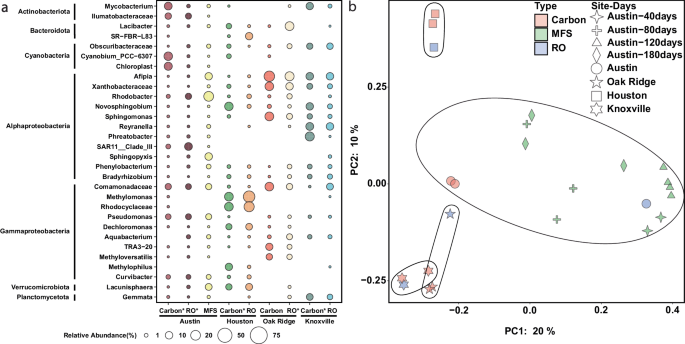使用点过滤装置作为饮用水分配系统的哨兵
IF 10.4
1区 工程技术
Q1 ENGINEERING, CHEMICAL
引用次数: 0
摘要
市政饮用水输配系统 (DWDS) 和相关的场所管道系统 (PP) 很容易受到机会性病原体扩散的影响,即使在存在化学消毒残留物的情况下也是如此,从而带来了公共卫生风险。由于连续接触水龙头、管道和储水箱的机会有限,因此监测饮用水微生物群落结构具有挑战性。我们提出了一种可扩展的家庭采样方法,该方法使用废活性炭和反渗透膜使用点过滤器(POU)来评估与消费者接触有关的中长期水处理系统中微生物的发生情况。作为概念验证,从四个不同地点收集了 POU 过滤器微生物组,并用 16S rRNA 基因扩增子测序法进行了分析。分析结果显示了不同的微生物群落,偶尔还能检测到潜在的病原体。这些发现强调了在本地以及在可能的情况下对输水系统内部和整个输水系统进行连续监测的重要性。POU 过滤器的连续运行在捕捉瞬时采样方法可能遗漏的物种方面具有优势。我们建议供水公司、公共机构和监管机构利用报废的 POU 过滤器进行微生物监测。这种方法易于实施,可确保饮用水安全,尤其是新出现的微生物,如致病性军团菌和分枝杆菌。本文章由计算机程序翻译,如有差异,请以英文原文为准。


Point-of-use filtration units as drinking water distribution system sentinels
Municipal drinking water distribution systems (DWDSs) and associated premise plumbing (PP) systems are vulnerable to proliferation of opportunistic pathogens, even when chemical disinfection residuals are present, thus presenting a public health risk. Monitoring the structure of microbial communities of drinking water is challenging because of limited continuous access to faucets, pipes, and storage tanks. We propose a scalable household sampling method, which uses spent activated carbon and reverse osmosis (RO) membrane point-of-use (POU) filters to evaluate mid- to long-term occurrence of microorganisms in PP systems that are relevant to consumer exposure. As a proof of concept, POU filter microbiomes were collected from four different locations and analyzed with 16S rRNA gene amplicon sequencing. The analyses revealed distinct microbial communities, with occasional detection of potential pathogens. The findings highlight the importance of local, and if possible, continuous monitoring within and across distribution systems. The continuous operation of POU filters offers an advantage in capturing species that may be missed by instantaneous sampling methods. We suggest that water utilities, public institutions, and regulatory agencies take advantage of end-of-life POU filters for microbial monitoring. This approach can be easily implemented to ensure drinking water safety, especially from microbes of emerging concerns; e.g., pathogenic Legionella and Mycobacterium species.
求助全文
通过发布文献求助,成功后即可免费获取论文全文。
去求助
来源期刊

npj Clean Water
Environmental Science-Water Science and Technology
CiteScore
15.30
自引率
2.60%
发文量
61
审稿时长
5 weeks
期刊介绍:
npj Clean Water publishes high-quality papers that report cutting-edge science, technology, applications, policies, and societal issues contributing to a more sustainable supply of clean water. The journal's publications may also support and accelerate the achievement of Sustainable Development Goal 6, which focuses on clean water and sanitation.
 求助内容:
求助内容: 应助结果提醒方式:
应助结果提醒方式:


